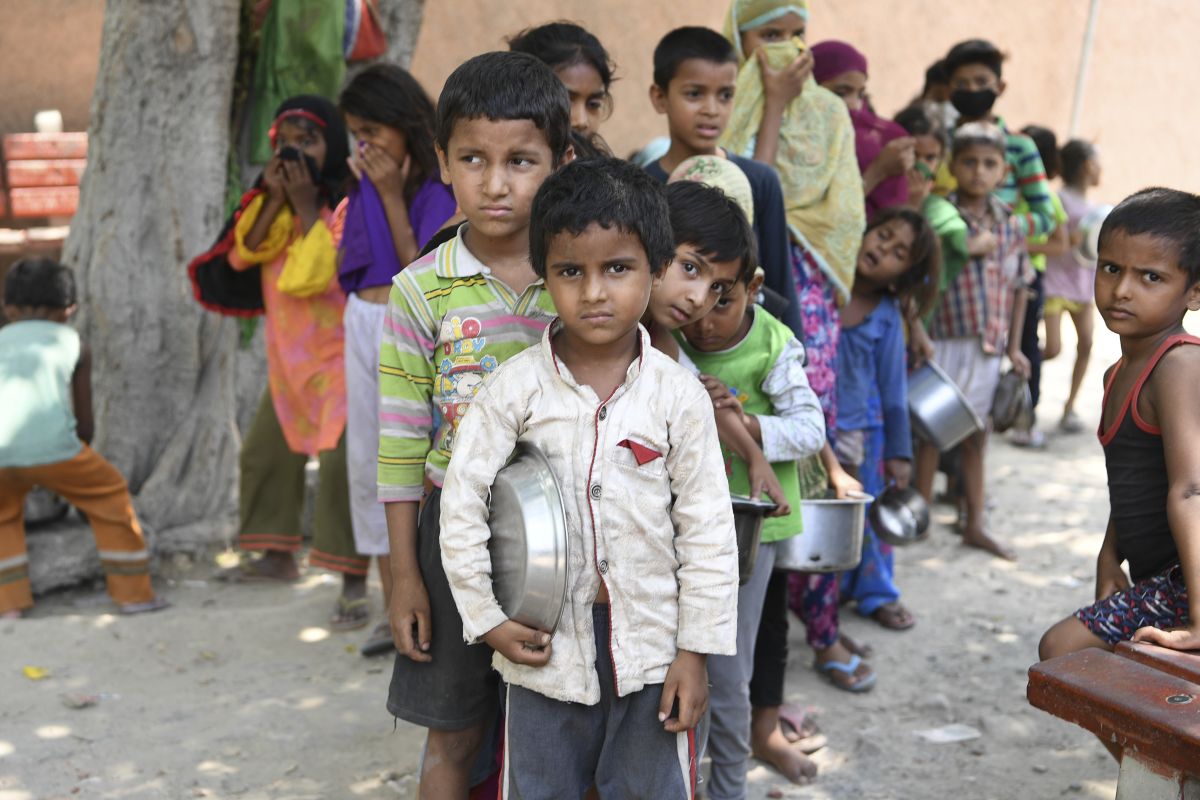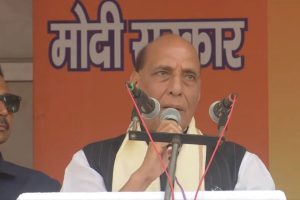In their essay, “How Poverty Ends” in Foreign Affairs journal, Nobel laureates Abhijit Banerjee and Esther Duflo pointed out that the period from 1980 to 2016 had seen remarkable reduction in global poverty, with doubling of the average income of the bottom half of workers. The number of extreme poor living at less than $1.90 a day as per the World Bank definition had also declined from nearly two billion to only 700 million. Never before in human history were so many people lifted out of poverty so quickly, a transition that was also accompanied by massive improvements in quality of life of the poor.
In India too, between 1993- 94 and 2011-12, poverty ratio declined from around 45 per cent to 22 per cent. Instead of being measured by income merely to provide for basic needs, multidimensional poverty index (MPI) got developed to measure access to education, healthcare and a minimum standard of living in terms of electricity, drinking water, sanitation, cooking fuel and assets. The Global MPI 2020 ranked India at 62nd place among 107 countries, with 28 per cent headcount of poor in the population, based on the NFHS 4 (2015-16) data.
According to another study by Surjit S Bhalla, Arvind Virmani and Karan Bhasin, only 84 million Indians were poor in 2017, down from 270 million in 2011. But all this was before the pandemic and the lockdown. Now we just don’t know how many more have been pushed back into poverty of basic needs, not to speak of the MPI, by the disruption and loss of income caused by the pandemic.
Much of the earlier decline in global poverty had come as a result of growth which directly correlated with increased government investments in education and healthcare – and especially in the two most populous countries– China and India. Now that growth has slowed down in both these countries, we ought to be anxious. But what are the levers of growth and where should we focus? Actually, nobody knows. Banerjee and Esther cite an interesting study by a commission on economic growth in 2006, appointed by the World Bank and headed by economist Michael Spence, whose final report said enigmatically: “After two years of work by the commission of 21 world leaders and experts, an 11- member working group, 300 academic experts, 12 workshops, 13 consultations, and a budget of $4m, the experts’ answer to the question of how to attain high growth was roughly: we do not know, but trust experts to figure it out.”
Disruptions and the resultant process of creative destruction have always driven growth by allocating resources optimally between the factors of production. But as productive and nonproductive firms always coexist in an economy, the allocation is not always efficient, necessitating reallocation of resources within industries to enhance productivity and boost growth. However, since the law of diminishing returns would operate here also, growth cannot be pushed indefinitely beyond a point and the economy must adjust to a lower growth trajectory. If we are expecting continuous and sustained high growth rates once the economy operates at full throttle, we are likely to be disappointed.
As examples of China and the Asian miracle economies show, the era of runaway growth is perhaps over. Exportoriented economies like these cannot grow unless the importing countries also grow at the same pace, and underutilised capacity would cause unemployment and other undesirable consequences. The economy must therefore adjust to and produce at a lower level which means a greater role for the State to support the poor deprived from the benefit of high growth.
After contraction by 23.9 per cent and 7.5 per cent respectively during the first two quarters of FY21, the Indian economy has finally returned to positive growth (0.4 per cent in the third quarter of FY21). The Economic Survey 2020-21 projected India’s real GDP growth for FY22 at 11 per cent, which is obviously high due to the low base after two successive contractions, followed by 7 per cent in FY23 and FY24, which may still be a tad optimistic. Growth rate of around 5 per cent may be our new normal for the next few years, trapping us in the ‘middle income trap’ out of which very few countries have emerged to become rich ~ only 13 of the 101 middle-income economies in 1960 could become rich by 2008.
Banerjee and Duflo warn that in order to push up growth, countries may be tempted to adopt policies that would ultimately hurt the poor, such as tax cuts for the rich and bailouts for corporations. The countries which have adopted these prescriptions faced skyrocketing inequality and proliferation of the superrich, while real growth mostly eluded them. Even the IMF today recognises that its past policies of ‘sacrificing the poor to promote growth’ was perhaps ‘a bad policy’; such a policy today would inevitably lead to a political backlash by populist leaders who would exploit popular sentiments to further sacrifice growth. If improving the quality of life and the standard of living remain the ultimate goal, the State must take the lead by focusing on thoughtfully designed empowering interventions in education, health and financial inclusion for the poor, to improve their lives.
Every crisis tests the resilience of society and redefines the social contract between the State and the individual. State interventions and stimulus packages announced by governments during the pandemic have expanded the role and outreach of the welfare state like never before in history. As The Economist pointed out, earlier during the global financial meltdown of 2008, Governments bailed out banks; this time they bailed out citizens. Welfare has also acquired a different connotation ~ from being only for the poorest, it now practically envelopes almost all whose lives have been battered by a ruthless virus. People are naturally demanding stronger social safety nets, but how much of it would be sustainable without permanently locking people in a ‘welfare trap’ is questionable.
The welfare state was the child of the Great Depression and was embraced by Europe at the turn of the last century. It came of age after WW-II when governments in war-ravaged countries were forced to provide free healthcare, education and social security. The stagflation of the 1970s altered its scope – by replacing doles and subsidies that were seen to promote laziness and dependency with incentives and tax credits to encourage people to work and produce. As States retracted and reduced their interventions, risks shifted to the individual.
Covid-19 has now retransformed the welfare state again, shifting the risk back to the State which was forced to dole out huge stimulus payments everywhere, and throw fiscal prudence to the winds to borrow heavily, stretching public finances to the breaking point as taxes nosedived. But the heavy debt burden is not worrying any nation; besides the fact that borrowing and debt servicing has become cheap due to the prevailing low interest rates, countries are also getting used to the idea of stabilising their debts at higher levels, just as they are trying to adjust themselves to the below-par growth rates. Once economies start recovering, governments will be forced to start tapering off the benefits.
Like every crisis, the pandemic has also highlighted the outmoded pattern of the welfare state where most workers, especially in the informal sectors in developing countries, have no social security umbrella to shelter them from a storm. But those countries which had put in place financial infrastructure supported by technology to reach people quickly through digital platforms have succeeded in mitigating the suffering of their poor to some extent. With Aadhaar-Jan-Dhan accounts and Mobile troika, India has also successfully transferred some cash to the neediest, to keep them from starving. Though it was a pittance, it highlighted the saviour role technology can play in a crisis, and in shaping the post-crisis world.
The World Economic Forum’s latest Future of Jobs Report, 2020 highlights that speedy automation of the workforce would disrupt 85 million jobs in the next five years in addition to the Covid-19 disruption of livelihood, and the dual disruption would transform tasks, jobs, and skills by 2025. But this ‘robot revolution’ will also create 97 million new jobs ~ in artificial intelligence, cloud computing, social media management, content writing and green economy; in this scenario, critical and analytical thinking, creativity, and flexibility would be the most soughtafter skills. Workers would need retraining to upgrade their skills and here again the State must provide necessary support.
Remote work is here to stay permanently, warranting rapid digitalisation of the work processes along with psychological and social support for their workers to help them adapt to the new work environment. Voices are growing stronger for a Universal Basic income (UBI) and higher spending on healthcare. While these can form part of a standard toolkits for the revamped welfare state, the level of welfare can be pegged to the state of the economy and the corporate sector must mandatorily be made to share its cost. But the State necessarily has to remain the ultimate shock absorber.











